Armidale and District – Penelope Sinclair
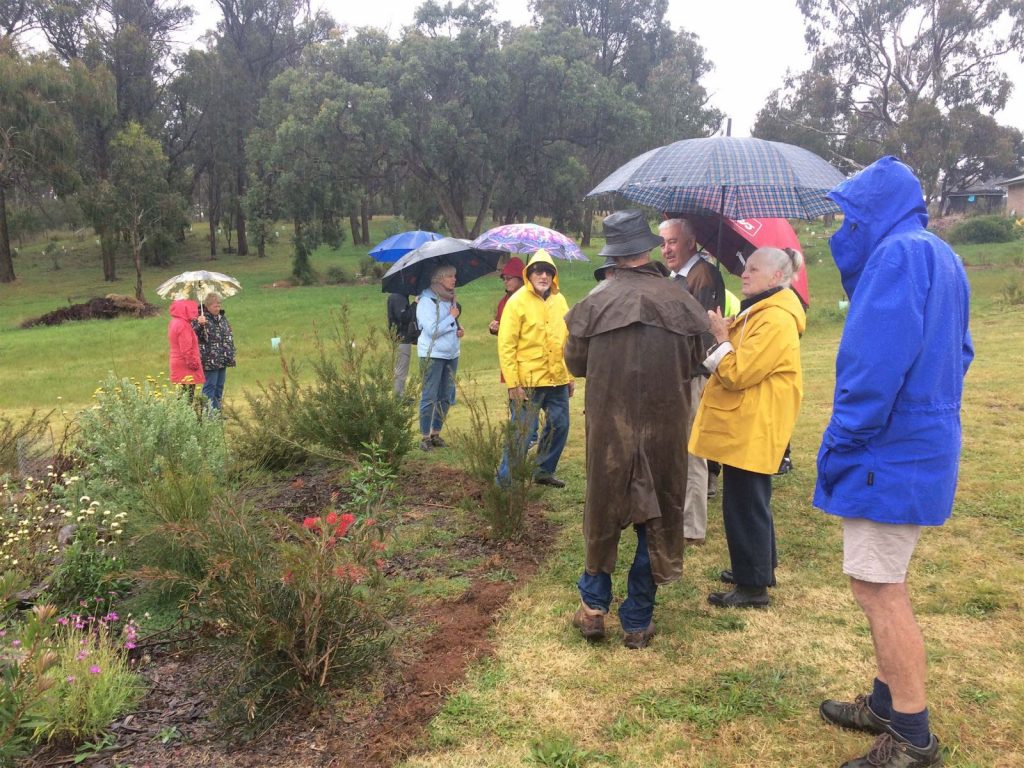
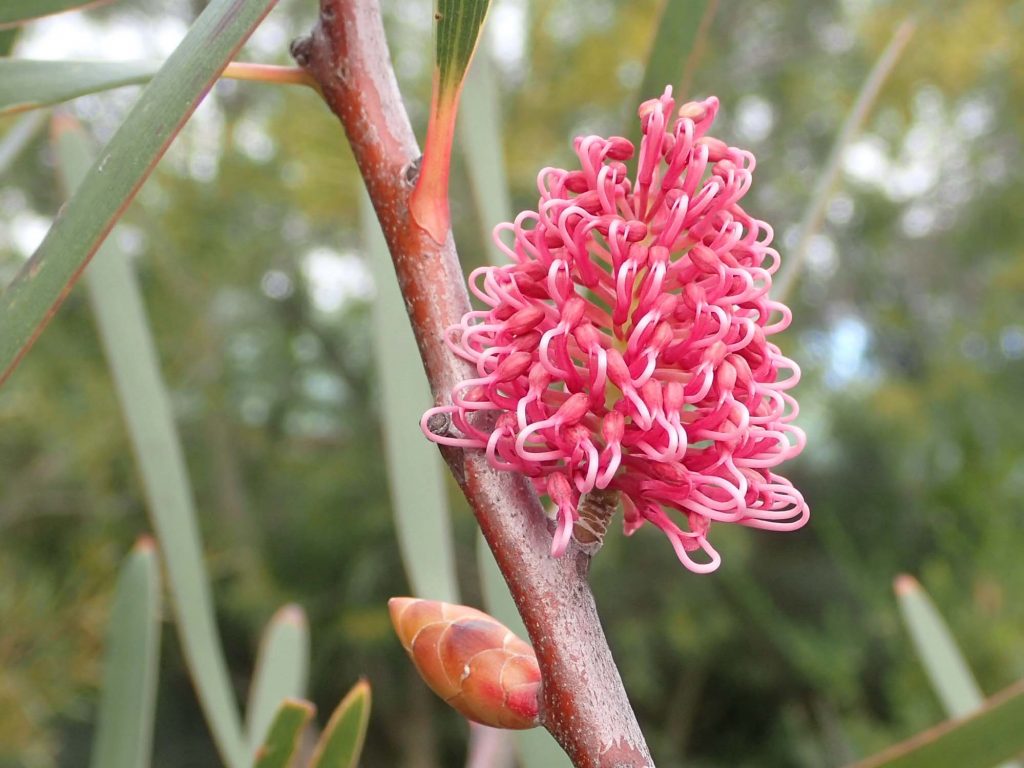
Activities were curtailed due to early heavy rains and COVID shutdowns. The highlights were provided by our working bees in the native plant section of the Armidale Bicentennial Arboretum and visits to members’ gardens.
Due to the wetter than usual conditions, three working bees had to be cancelled but as planting conditions were good, we planted 127 shrubs as well as carrying out the usual maintenance.
The two garden visits in April took place in persistent and at times heavy rain – the first a smallish garden had a good stream flowing through the grove of Casuarina cuninghamiana along the boundary. Some Correas and Callistemons were in flower and small birds were evident with their songs as they took shelter in the shrubberies. Rain continued during our visit to the second garden which was being established on a four-hectare property nearby. Of particular note was a flowering Eremophila mackinlayi from Western Australia, commonly known as Desert Pride! There were other unusual species e.g. Pittosporum angustifoilium from inland NSW and the endangered Pimelea venosa. We did skip the usual afternoon tea as most folk had become rather wet.
Later garden visits took place under sunny skies and introduced members to a range of garden sizes and challenges. A return visit in June to an urban garden in Uralla where planting had started eight years previously was notable for the impressive growth in the boundary species which provided privacy and bird habitat. Although it was early winter with members requiring warm clothing, there were beautiful blooms to enjoy such as Grevillea lanigera – tall, Hakea multilineata and Banksia ericifolia. This garden visit was followed by lunch together at the Top Pub, celebrating the Winter Solstice.
Central Coast - Richard Street
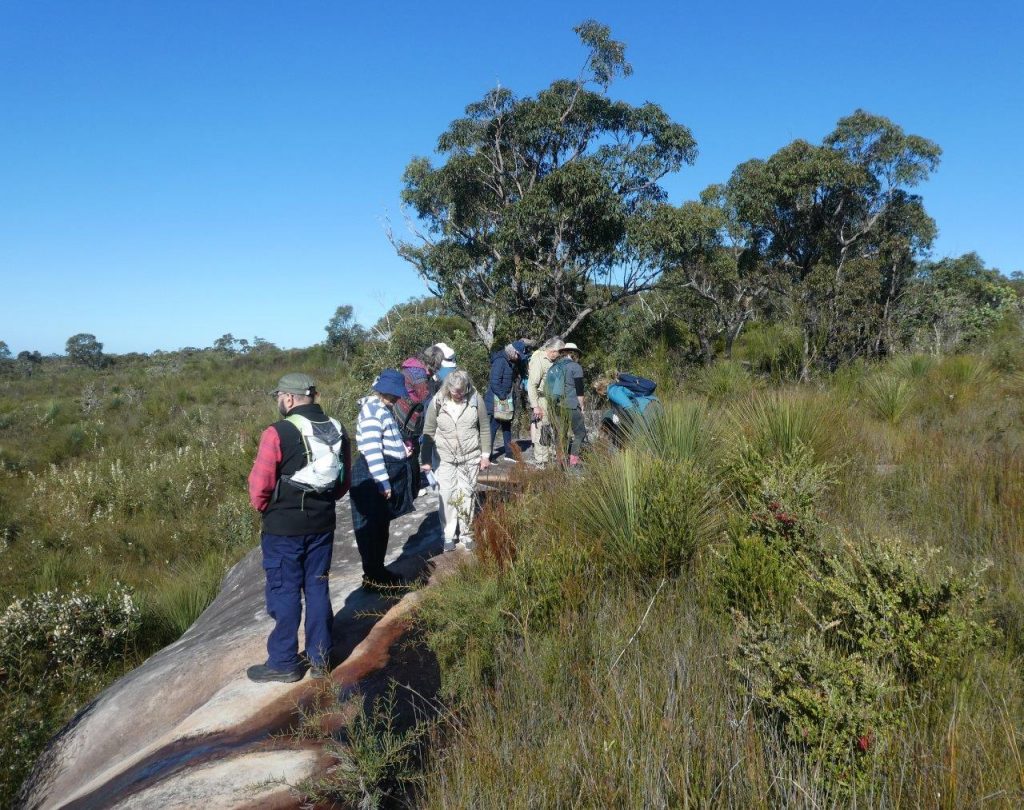
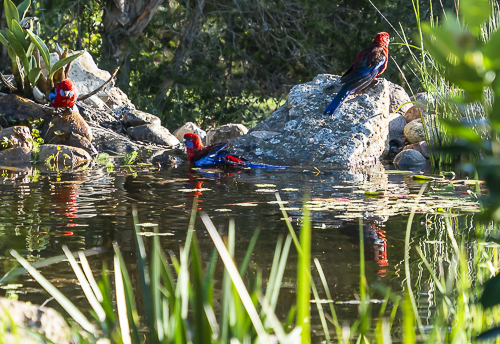

This year has been another challenging one for the friendly and gregarious members of the Central Coast group. The various COVID restrictions were the source of much frantic last-minute replanning but were ultimately effective it seems as all our members remained healthy.
This year we have a new activity. One of our members, Diane Warman, is an actual practicing botanist and she has been kind enough to undertake Basic Bush Botany sessions in the field with a group of members. I think all the participants have had their understanding and enjoyment of Australian Plants enhanced and extended as a result. I am personally looking forward to a resumption and expansion of this sort of educational activity.
Two online plant sales were conducted during the year and were terrifically successful. The propagation days (Thank you especially to Graeme Ingall) were a popular social event, the buyers got great deals and the revenue back filled the losses from COVID cancellations. Thanks to Cath Stofka and her happy band of workers.
Diana and Barry Dean were kind enough to donate to the group the considerable body of work they have compiled over many years. Their detailed lists of the species found in specific locations and habitats on the Central Coast greatly enhance and extend the activity of our bush walks.
Some interesting and educational talks were conducted at meetings between corona waves. Topics included rain forest plants, dune care, Fungi, Easter show displays, and Native ponds. Our members are now mostly adept at using the APS zoom facility for online meetings.
Our dedicated team of bushwalk planners managed to plan and deliver some fabulous walks between lockdowns and isolations. They are greatly appreciated by the group as always. Thank you Barbara Melville, Joan Harden, Liz Hemphill, there is much more work put into the planning the right walk at the right place and time than the participants might imagine.
Our members are flexible and enthusiastic, adapting to the constantly changing rules and guidelines to safely indulge in our shared love of Australian Plants. Let’s hope 2022 allows a return to relative normality as we once enjoyed it.
Harbour Georges River - Marie O'Connor, Elizabeth Cameron
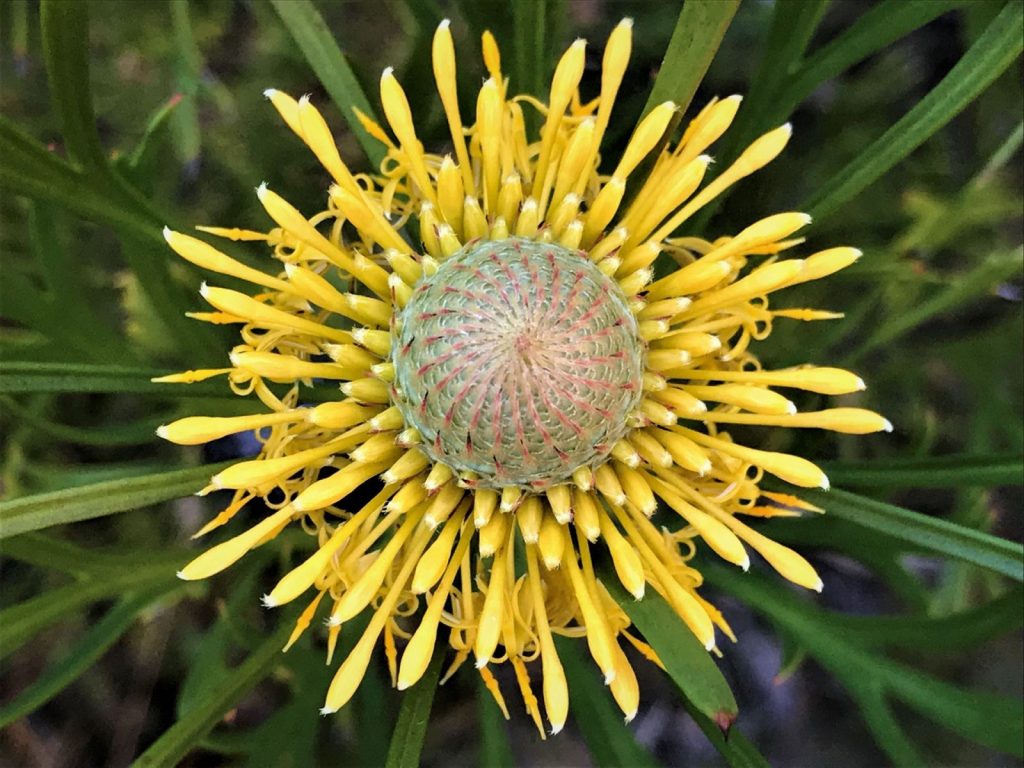
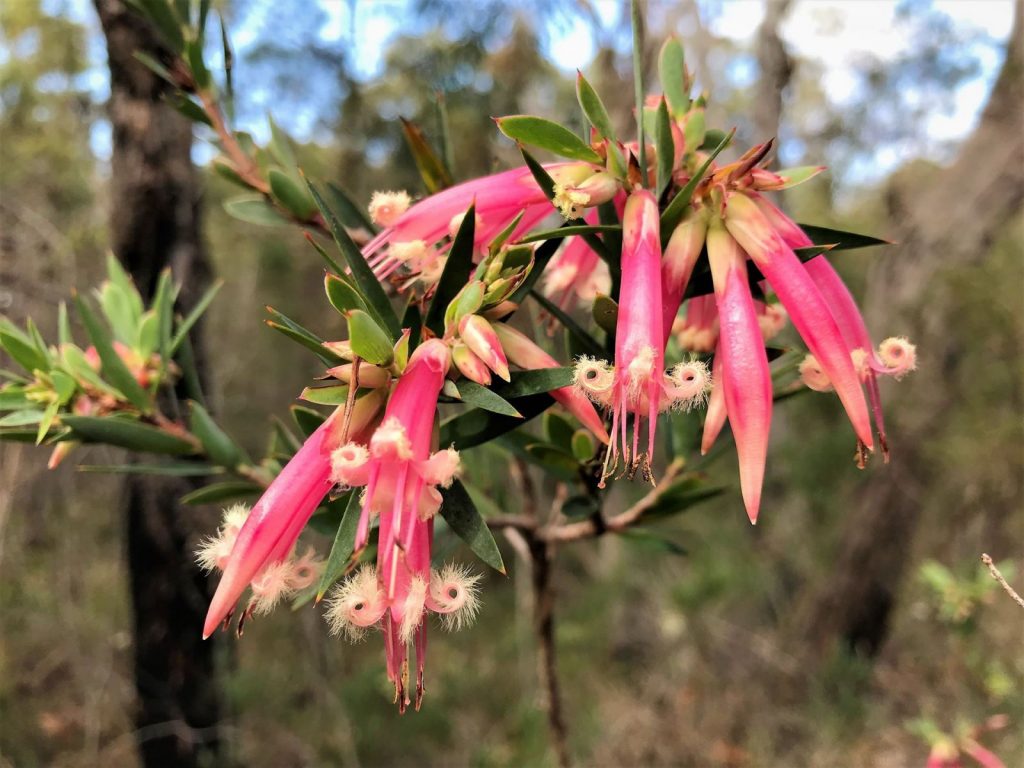
In 2021, East Hills Group adopted a new name – Harbour Georges River – and sketched out a catchment area for our group to better reflect the distribution of our current members. We reached out to APS NSW members who lived within that catchment area and were not affiliated with a particular group. One of these has joined our committee, bringing fresh ideas.
We provided advice and practical help for Picnic Point Public School (in the heart of the original East Hills Group catchment) to re-establish a native plant garden originally created in their school grounds about 40 years ago. David Crawford and Jan Douglas, and Lloyd Hedges (Menai Wildflower Group) visited the school, donated some tubestock including flannel flowers, and suggested suitable local species as replacement plantings.
Monthly meetings were changed to the afternoon from an evening time slot because the venue was not available at night; the new time attracted quite high numbers of visitors (30-50% of audience). Two meetings were cancelled because of Covid lockdowns and three meetings were held on Zoom.
Karlo Taliana, our Propagation Officer for many years, stepped down from the position. His very significant contribution to our group’s supply of flourishing plants and our income, is much appreciated.
Our year ended on a sad note with the deaths of two very long-term stalwarts of our group – Kyrill Taylor and Graham Walters.
Hunter Valley - Michael Belcher

2021 was very challenging for the Hunter Valley Group. Between Covid and inclement weather, we had to cancel all but two of our activities. Even these had small attendance because of concerns over the transmission of Covid.
Our one significant event was to sponsor the Flora of the Hunter Region Exhibition at Brough House in Maitland. This was a joint exhibition of the Maitland Regional Museum, Newcastle Museum and The National Trust. We supplemented the enlarged plates of botanic illustrations with live plants and dried specimens. We also sponsored children’s wildlife illustration classes and had a display and sale of plants endemic to the Hunter during the official opening. The exhibition went from 10 April to 30 May. Fortunately it fell between the waves of Covid and was visited by a large number of people. It was our only planned exhibition/display that proceeded.
A major problem is that we have not been able to meet to hold an AGM. We have rolled over the executive positions now for two years with approval given at gatherings. However, it is definitely time for others to pick up the mantle.
Macarthur - Lesley Hook
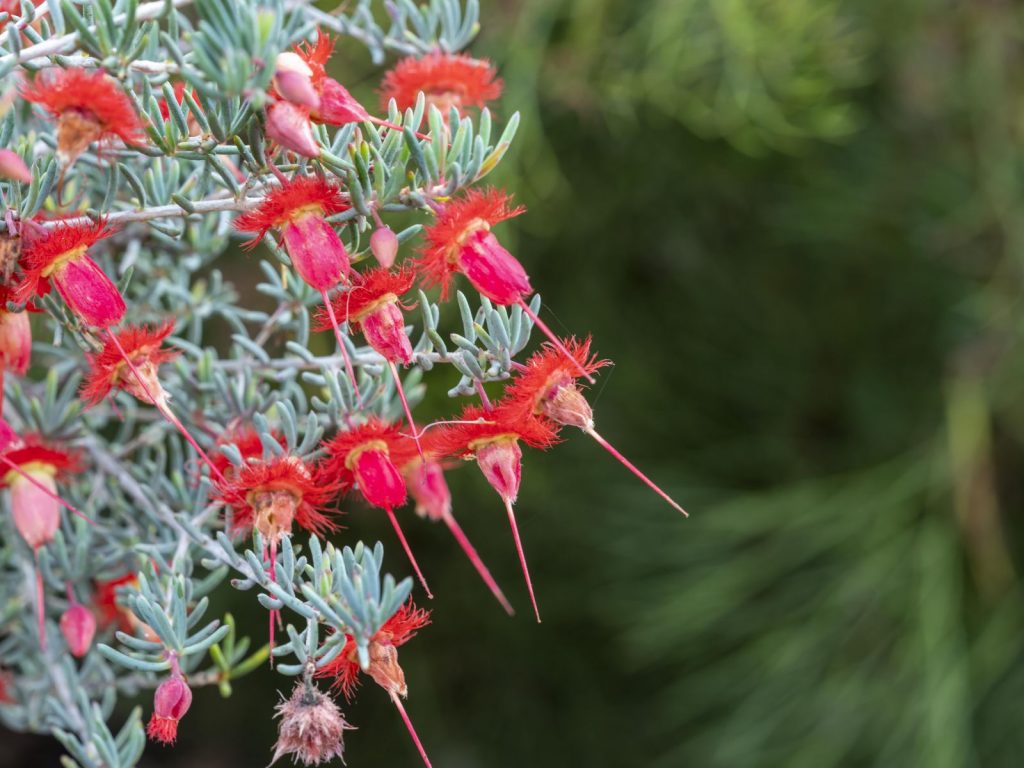
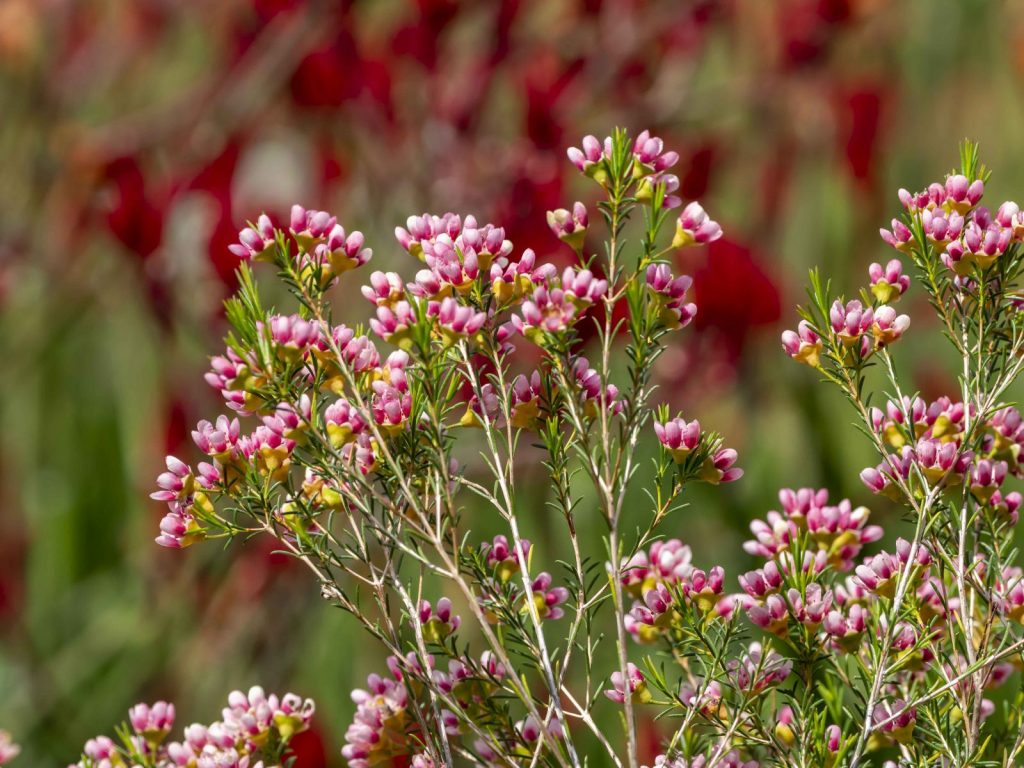
Unfortunately Covid had a major impact as January, July, August and September meetings were cancelled. However we did not totally hibernate. In February and October we met at the Australian Botanic Garden at Mt. Annan. After the meeting we toured the garden where the meeting was held to become more familiar with the plants. We viewed the wattles in February and the banksias in October.
Socialising was the order of the day in March as we indulged in scones, jam and cream at the 102 café in the grounds of the University of Sydney (Veterinary section). David and Malle Eden invited us to their property at Oakdale for a meeting and to view the regrowth of the bush after the 2020 bushfires.
April saw the Wollondilly Shire Council provide a memorial and native plant garden at the Picton Botanic Garden for Robyn Davies. Several of our members attended and partook of the planting. The food was great as well. We revisited the Picton Botanic Garden in November for a meeting and to see how the plants were surviving at Robyn’s memorial.
The APS NSW Quarterly meeting a Kurnell in May was attended by 5 of our members. Rod and Lesley attended the Picton Bowling Club for the final scientific report on the Thirlmere Lakes water problem. Their results proving the mines weren’t the problem. The roast lunch provided was to die for!
Zoom meetings were attended by some members. A few of our members volunteer at the Picton Community Native Plant nursery where we are involved in propagation. We hope that 2022 will be a more productive year.
Newcastle - Mark Abell
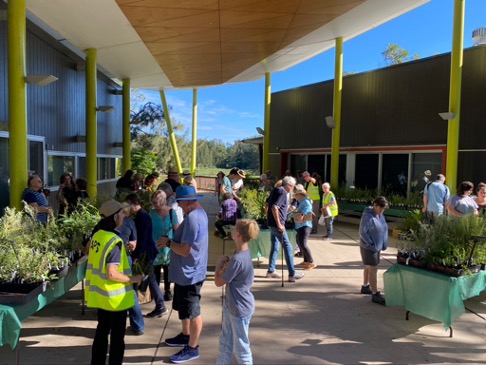
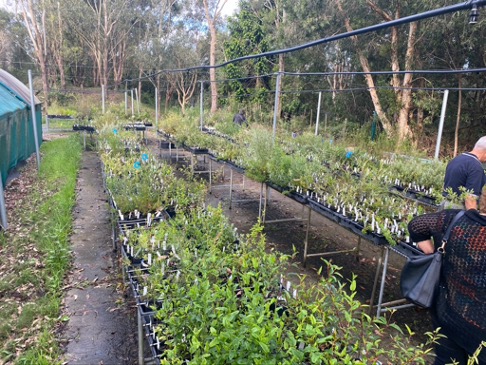
Another difficult year, but in spite of Covid we managed to maintain a full calendar of excellent talks (many via zoom). When arranging talks by zoom we took the opportunity to use guest speakers from further afield who would not normally be able to attend in-person.
In-person activities were somewhat curtailed with the various restrictions. The mid weekers walks made up a good proportion of the bush walks.
We also invested in a Square eftpos terminal, which ensures that we can now take all sorts of cards for our plant sales. This was given a run at our plant sale where it managed to handle about 40% of the total sales.
Another successful plant sale was held in March but Covid restrictions prevented another one in the second half of the year.
The nursery is open on Thursday mornings for plant sales as well being the morning when the propagation team does their work.
Other activities included provision of plants to both the Hunter Wetlands & to the Hunter Region Botanic Gardens (where we maintain a presence with the Parry Place garden)
North Shore - Sue Bowen
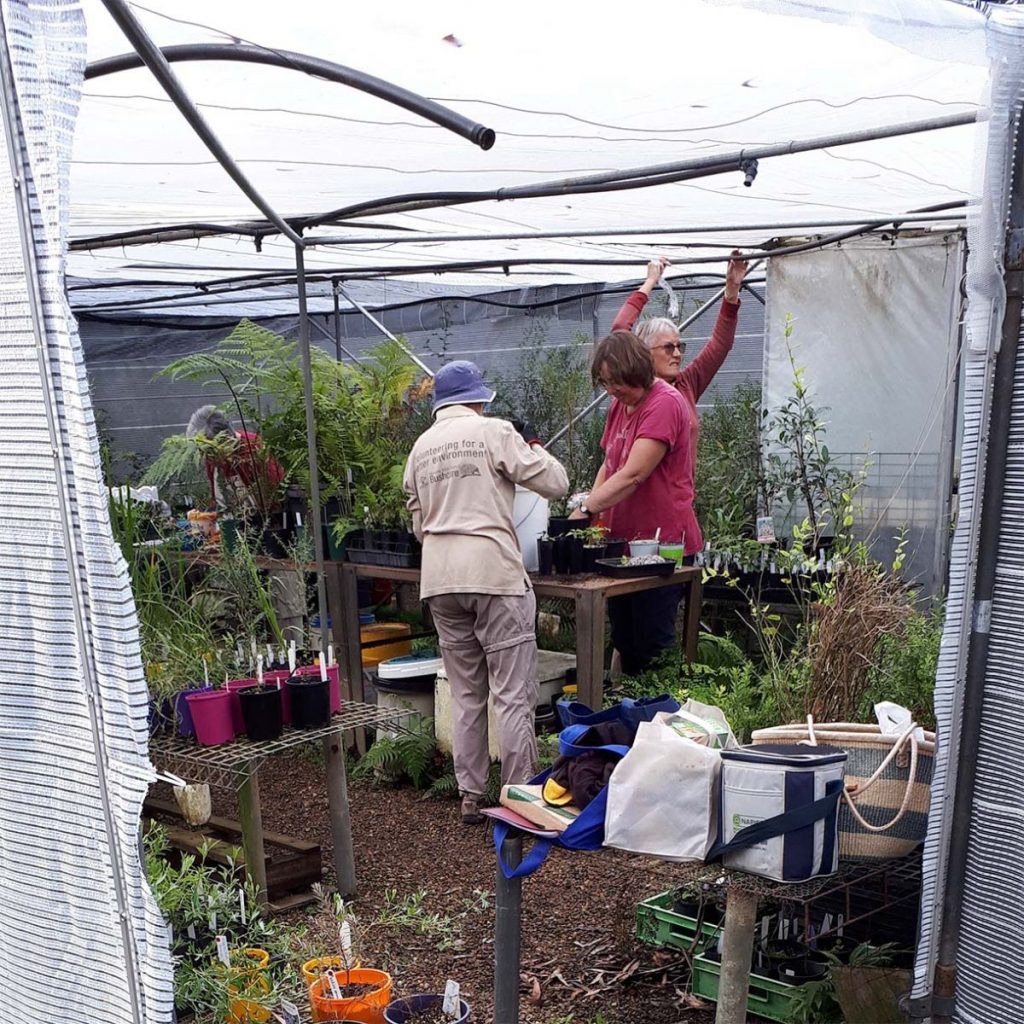

2021 was a difficult year for everyone. We held as many activities as possible under Covid restrictions. Monthly meetings continued, either as face to face meetings or as zoom meetings. Our fewer Walks and Talks were walks only, the wildflower display was updated at Ku-ring-gai Wildflower Garden when possible and plant propagation, maintenance of the Knoll garden and Bushcare also continued, when possible.
Despite the restrictions we carried out some much-needed improvements to our shadehouse: the entry path was gravelled and the shadecloth roof and walls were replaced.
We also held two very successful plant sales, with attendance by invitation only.
One activity that continued despite Covid was the awarding of our 13th Val Williams scholarship in April 2021. We sponsor the scholarship every year in memory of our former esteemed member, Val Williams (1937-2004). Applications are sought firstly from Honours students but also from Masters or PhD students doing research at universities in the Sydney region. The scholarship is currently worth up to $3,500.
The project must contribute to the knowledge of the ecology, conservation or propagation of native plants in the Sydney and surrounding regions.
Our scholarship winner for 2021 was Harriet Simpson-Southward. Harriet is a PhD candidate in Biological Sciences at the University of Wollongong working in the Centre for Environmental Risk Management of Bushfires (CERMB). Her topic is: ‘Effects of climate change on resilience of fire prone eucalypt communities’.
Each scholarship winner is required to present the findings of his or her research to a meeting of our group in the year following the awarding of the scholarship.
We always find the findings of the research fascinating despite the amazing technology used to collect and analyse data. We are also pleased that every winner is very appreciative of the fact that our scholarship allows them to do essential data collection and analysis.
Parramatta and Hills - Jennifer Farrer

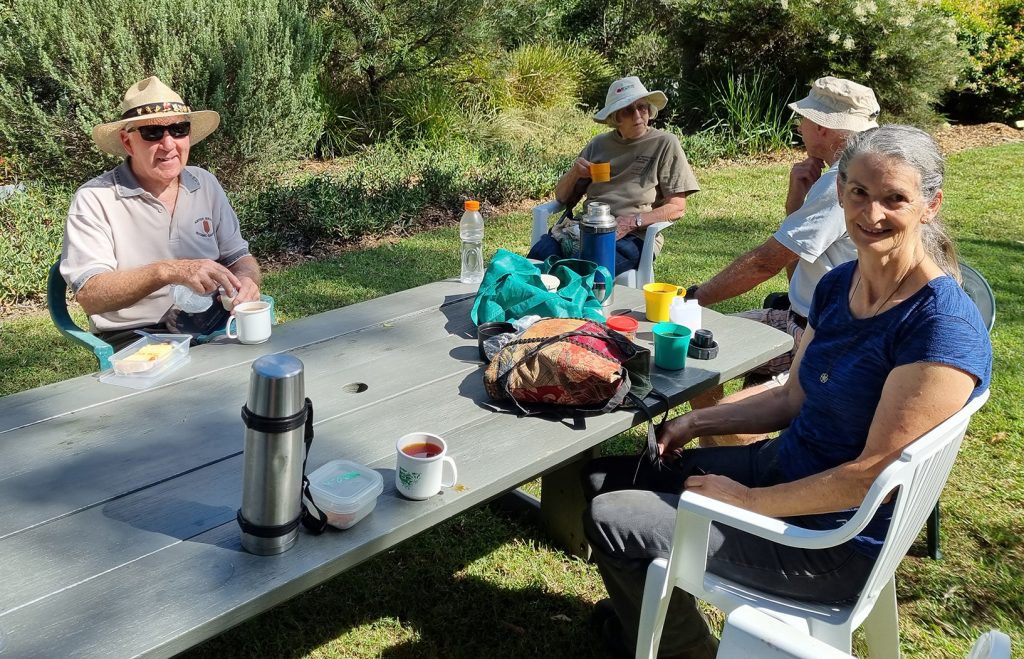
This year was again disrupted by the COVID pandemic.
Our program of bushwalks and talks was held in the first half of the year without interruption. Unfortunately, we were not able to return to the Council Nursery for our propagation activities until April and this activity ceased very soon afterwards with the four month lockdown which began in July. The lack of propagation experience at the Nursery was compensated for by an excellent workshop led by one of our members, Lesley Waite.
The second half of the year was disrupted by the lockdown. The July meeting and August bushwalks were cancelled. In September we held a Zoom meeting with the theme ”How I survived lockdown” Members contributed slides for a Powerpoint presentation showing new gardens, spectacular flowers and craft activities. Most of our members have not embraced Zoom so this meeting was not as well attended as our face to face meetings.
The highlights of this year were the bushwalk in October along the Cranston’s Road firetrail at Dural and the final members’ meeting in November where Malcolm Johnson gave an illustrated talk about his canoe trip down Cattai Creek from Castle Hill to the Hawkesbury River.
The Group appreciates the excellent editions of our monthly newsletter Calgaroo, produced by Ian Cox, which have kept us in touch and informed when we could not meet in person.
Southern Highlands - Kim Zegenhagen
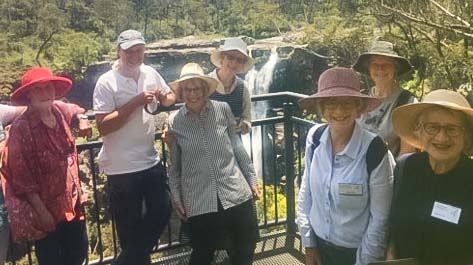

The Southern Highlands group had a Covid enforced recess from July to September. Despite this we still had several well patronized and successful functions and an increase in membership to 90.
Highlights from the year include:
- Four successful garden visits with up to 40 attendees each time.
- A very successful propagation workshop with 26 participants. This has resulted in several members now propagating rare and endangered acacias. Our intention is then to distribute these as tube stock to members to grow in their own gardens.
- A talk on landscaping for small gardens with 29 participants.
- An indoor talk was given by an environmental employee of Wingecarribee Shire Council discussing an app called Naturemapr.
- On three occasions talks were given by several members on a local community radio station. Sessions were 10-15 minutes in a question-and-answer format, broadcast live at 1pm on Fridays. We will resume this when sitting unmasked in a small studio will be allowed.
- A very enjoyable Christmas function incorporating a visit to a native plant nursery, a bush walk to Carrington Falls and then lunch in Moreton National Park was attended by about 25 members.
- We continue to publish a newsletter every second month. We have asked members to submit articles and /or photos, which has been met with an enthusiastic response.
- Two members continue to maintain several large planter boxes outside Coles-Bowral. These boxes include contact details for our group.
- Creating a new mission statement, as of September 2021.
- We now commence all our meetings with an Acknowledgement of Country.
Southern Tablelands - Jen Ashwell
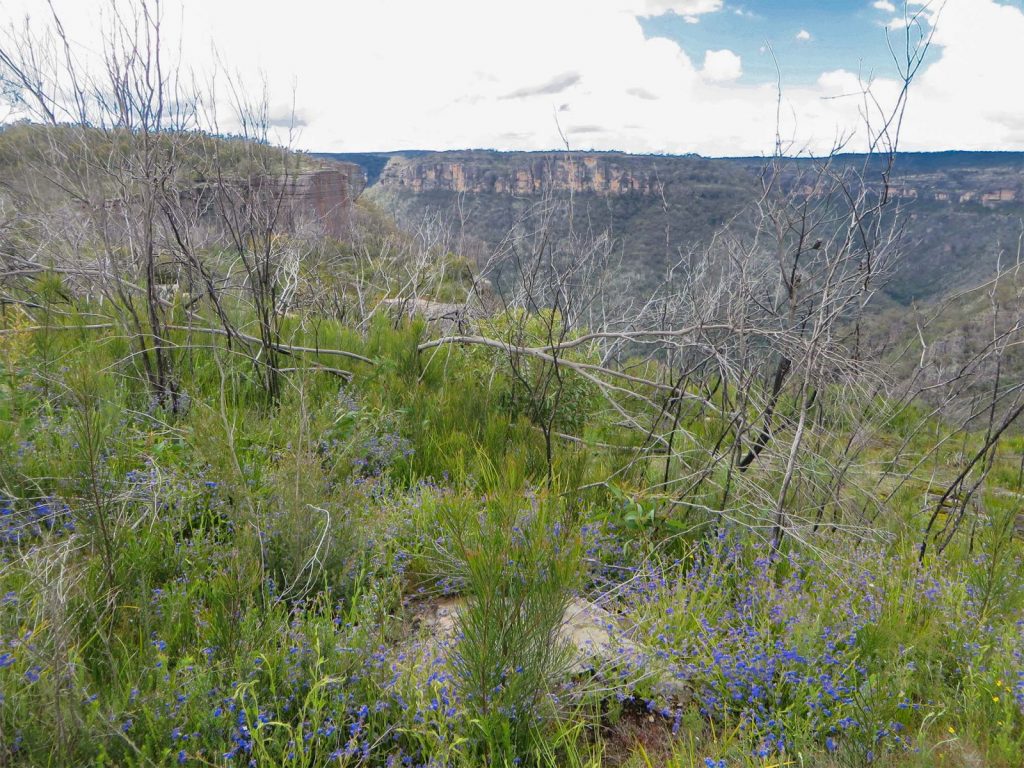

2021 has brought a change in Presidents for this group with Peter Wauchope retiring after having done a sterling job of running the propagation and sale of plants for the last few years, as well as keeping things running smoothly for the last three years with the constant changes happening.
We have had an increase in membership and have lost a few however we have to recognise that quite as few of our members live a long way from Goulburn and thus find it difficult to be involved in many activities. The most popular was the visit to Ben and Ros Walcott’s garden in Red Hill, Canberra.
Pauline Husen has continued her amazing dedication to the APS Gardens at the Goulburn Wetlands with a little help from others and no help from the torrential rain that has washed mulch as well as plants away. The aim of these gardens is to show case Australian Native Plants that will grow happily in this region. Several of our members also continue to propagate species that are indigenous to the area for the plantings of the Wetlands themselves.
Even when we went in to lockdown Peter was able to sell plants we had propagated (328 tubes) by leaving orders at the gate of his place for collection by members.
Our final walk in early November was the best outing to me, personally, as we went to the top of Ettrema Gorge to see the recovery from the fires in early January 2020. The rain had made a huge impression on the flora with Damperia stricta forming a carpet of blue and Actinotus helianthi standing out to a much greater height than I had ever seen before. And the sun even shone for us.
Here’s hoping that as we progress through the coming year we will have less disruptions to our activities.
